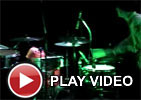New West
 At its simplest, this album proves yet again what exactly is wrong withthe major record label system: they don't know what to do with goodtalent, and they relentlessly promote the mediocre variety. Old 97swere the darlings of the indie rock scene, releasing one album on theirown and another for Bloodshot Records, throwing out their own brand ofpunkified countryness with a classic Old West feel. They wereeventually snatched up by Elektra, where they released three morerecords, every one an attempt by the band and the label — more thelatter than the former, I'd wager — to get that one true hit, makingthe songs poppier and poppier as they went along. They did pretty well,but their albums never really hit the big time, and eventually labeland band parted ways. This obviously triggered a return to the DIYmoments of their past, as their first album for their new label is atrue awakening of potential, and a bold statement about where a bandcan go on their own if they're not prodded and poked. Old 97s of oldhad fire and spunk, but still held on to their roots, maintaining aflavor and sound that was decidedly uncommercial, as it was unsurewhere they fit in. That feel, that classic "we don't know if this isgoing to work" vibe, is all over these songs, and the band sound betterthan ever. This is wholesale rejuvenation, with every band memberpulling out their very best, and letting the true directions of theband set in. Drag It Upwas recorded on eight tracks, and most vocals recorded in one room withone microphone. It sounds dirty, uneven, and like the band wanted totake chances. The record features guitarist Ken Bethea's first stab atlead vocals on "Coahuila," and while not a brilliant first effort, thetrack has the most energy of any on the record. Bassist Murry Hammondsings a few tracks, as usual, and as usual I'm not real fond of thosesongs, though they are still great slices of storytelling. When allpieces fall into place, it's like all the stars aligned and the trueshape of the constellation can be revealed. Rhett Miller's clean wailis better than ever on songs like "Bloomington" and "The New Kid," andhe even warbles here and there, letting the little imperfections makeit all better. What it all adds up to is that five albums along Old 97sare experiencing a rebirth, and the sky's the limit.
At its simplest, this album proves yet again what exactly is wrong withthe major record label system: they don't know what to do with goodtalent, and they relentlessly promote the mediocre variety. Old 97swere the darlings of the indie rock scene, releasing one album on theirown and another for Bloodshot Records, throwing out their own brand ofpunkified countryness with a classic Old West feel. They wereeventually snatched up by Elektra, where they released three morerecords, every one an attempt by the band and the label — more thelatter than the former, I'd wager — to get that one true hit, makingthe songs poppier and poppier as they went along. They did pretty well,but their albums never really hit the big time, and eventually labeland band parted ways. This obviously triggered a return to the DIYmoments of their past, as their first album for their new label is atrue awakening of potential, and a bold statement about where a bandcan go on their own if they're not prodded and poked. Old 97s of oldhad fire and spunk, but still held on to their roots, maintaining aflavor and sound that was decidedly uncommercial, as it was unsurewhere they fit in. That feel, that classic "we don't know if this isgoing to work" vibe, is all over these songs, and the band sound betterthan ever. This is wholesale rejuvenation, with every band memberpulling out their very best, and letting the true directions of theband set in. Drag It Upwas recorded on eight tracks, and most vocals recorded in one room withone microphone. It sounds dirty, uneven, and like the band wanted totake chances. The record features guitarist Ken Bethea's first stab atlead vocals on "Coahuila," and while not a brilliant first effort, thetrack has the most energy of any on the record. Bassist Murry Hammondsings a few tracks, as usual, and as usual I'm not real fond of thosesongs, though they are still great slices of storytelling. When allpieces fall into place, it's like all the stars aligned and the trueshape of the constellation can be revealed. Rhett Miller's clean wailis better than ever on songs like "Bloomington" and "The New Kid," andhe even warbles here and there, letting the little imperfections makeit all better. What it all adds up to is that five albums along Old 97sare experiencing a rebirth, and the sky's the limit.
 At its simplest, this album proves yet again what exactly is wrong withthe major record label system: they don't know what to do with goodtalent, and they relentlessly promote the mediocre variety. Old 97swere the darlings of the indie rock scene, releasing one album on theirown and another for Bloodshot Records, throwing out their own brand ofpunkified countryness with a classic Old West feel. They wereeventually snatched up by Elektra, where they released three morerecords, every one an attempt by the band and the label — more thelatter than the former, I'd wager — to get that one true hit, makingthe songs poppier and poppier as they went along. They did pretty well,but their albums never really hit the big time, and eventually labeland band parted ways. This obviously triggered a return to the DIYmoments of their past, as their first album for their new label is atrue awakening of potential, and a bold statement about where a bandcan go on their own if they're not prodded and poked. Old 97s of oldhad fire and spunk, but still held on to their roots, maintaining aflavor and sound that was decidedly uncommercial, as it was unsurewhere they fit in. That feel, that classic "we don't know if this isgoing to work" vibe, is all over these songs, and the band sound betterthan ever. This is wholesale rejuvenation, with every band memberpulling out their very best, and letting the true directions of theband set in. Drag It Upwas recorded on eight tracks, and most vocals recorded in one room withone microphone. It sounds dirty, uneven, and like the band wanted totake chances. The record features guitarist Ken Bethea's first stab atlead vocals on "Coahuila," and while not a brilliant first effort, thetrack has the most energy of any on the record. Bassist Murry Hammondsings a few tracks, as usual, and as usual I'm not real fond of thosesongs, though they are still great slices of storytelling. When allpieces fall into place, it's like all the stars aligned and the trueshape of the constellation can be revealed. Rhett Miller's clean wailis better than ever on songs like "Bloomington" and "The New Kid," andhe even warbles here and there, letting the little imperfections makeit all better. What it all adds up to is that five albums along Old 97sare experiencing a rebirth, and the sky's the limit.
At its simplest, this album proves yet again what exactly is wrong withthe major record label system: they don't know what to do with goodtalent, and they relentlessly promote the mediocre variety. Old 97swere the darlings of the indie rock scene, releasing one album on theirown and another for Bloodshot Records, throwing out their own brand ofpunkified countryness with a classic Old West feel. They wereeventually snatched up by Elektra, where they released three morerecords, every one an attempt by the band and the label — more thelatter than the former, I'd wager — to get that one true hit, makingthe songs poppier and poppier as they went along. They did pretty well,but their albums never really hit the big time, and eventually labeland band parted ways. This obviously triggered a return to the DIYmoments of their past, as their first album for their new label is atrue awakening of potential, and a bold statement about where a bandcan go on their own if they're not prodded and poked. Old 97s of oldhad fire and spunk, but still held on to their roots, maintaining aflavor and sound that was decidedly uncommercial, as it was unsurewhere they fit in. That feel, that classic "we don't know if this isgoing to work" vibe, is all over these songs, and the band sound betterthan ever. This is wholesale rejuvenation, with every band memberpulling out their very best, and letting the true directions of theband set in. Drag It Upwas recorded on eight tracks, and most vocals recorded in one room withone microphone. It sounds dirty, uneven, and like the band wanted totake chances. The record features guitarist Ken Bethea's first stab atlead vocals on "Coahuila," and while not a brilliant first effort, thetrack has the most energy of any on the record. Bassist Murry Hammondsings a few tracks, as usual, and as usual I'm not real fond of thosesongs, though they are still great slices of storytelling. When allpieces fall into place, it's like all the stars aligned and the trueshape of the constellation can be revealed. Rhett Miller's clean wailis better than ever on songs like "Bloomington" and "The New Kid," andhe even warbles here and there, letting the little imperfections makeit all better. What it all adds up to is that five albums along Old 97sare experiencing a rebirth, and the sky's the limit. 

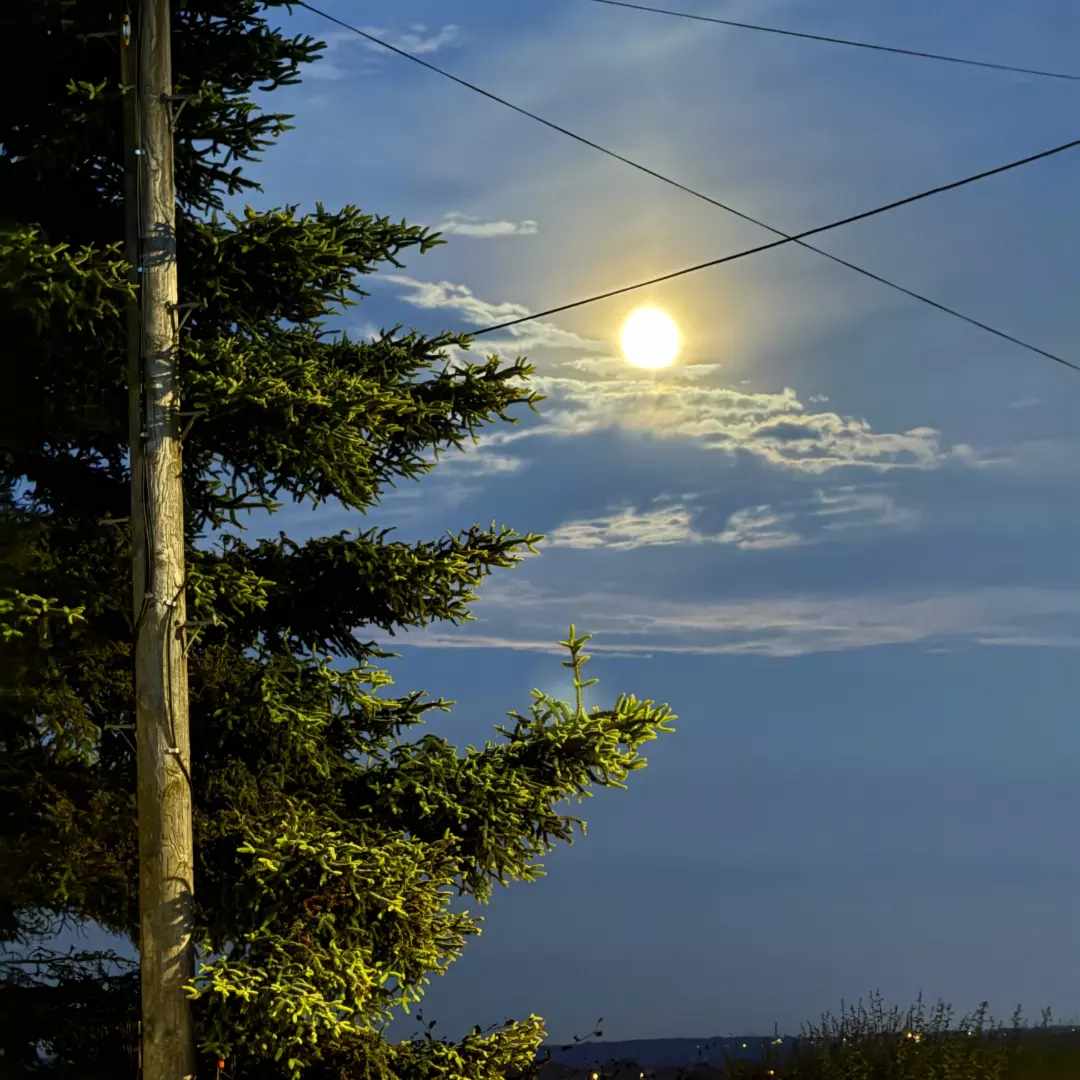
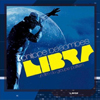 Philippe Besombes was a Ph.D. student with an abiding interest incontemporary electro-acoustic music, an interest that led him tocollaborate and play with Jean Michel Jarre, Jean-Francois Dessoliers(as PJF) and Jean-Louis Rizet (as Pole). Both Besombes' and Pole'snotoriety have been sealed by their inclusion on Steven Stapleton andJohn Fothergill's famous Nurse With Wound Influence List, whichappeared in the liner notes for NWW's debut album. Israel's MIO recordshas been doing quite a good job in issuing rarities from the NWW listlately, and this CD is no exception. Comprising the entire original1974 LibraLP on Tapioca (composed as the soundtrack to the film of the samename), MIO also generously adds four tracks from the same general timeperiod, filling out the running time of the disc to 76 minutes.Besombes' unorthodox work nervously straddles two strikingly differentdimensions - avant-garde electronic composition and the contemporaryEuropean prog and psych-rock prevalent at the time. Besombes negotiatesthis dichotomy rather brilliantly, producing a spectacularly uniquealbum that pulls in influences seemingly from everything the artistever heard in his lifetime. The paltry three samples below simply can'treflect the true variety of approaches on the album, from the jarringmetallic drones and disturbingly strangled vocals of "La Plage" to thecosmic Indian twang of "Raggacountry" to the languid fuzz guitar loungeof "Ballade en Velo." Besombes employs various synthesizers, Moogs,electric sitars, oscillators and a studio full of rock session playersto achieve the stunning dynamics of the album. "Boogimmick" is asynth-drenched heavy blues stomp in the style of Hawkwind, but alsoseeming simultaneously to function as an absurdist parody of suchmusic. "Hache 6" stands out, a heavily phased funk excursion,reminiscent of the kind of eclectic library music uncovered by LukeVibert and Barry 7 on their Lo Recordings compilations. Before thealbum is over, I'm treated to an atonal free-jazz meltdown ("LaVille"), a science-fiction fanfare of mind-altering proportions ("LesCosmonautes") and a lovely psych ballad ("Tis a Song"). Bonus tracksrange from a funky breakbeat jazz number with female vocals to anamazingly textured, 20-plus minute piece for prepared piano. Libra is a fantastic album, in that rare category of storied, obscure albums that actually deserve their reputation.
Philippe Besombes was a Ph.D. student with an abiding interest incontemporary electro-acoustic music, an interest that led him tocollaborate and play with Jean Michel Jarre, Jean-Francois Dessoliers(as PJF) and Jean-Louis Rizet (as Pole). Both Besombes' and Pole'snotoriety have been sealed by their inclusion on Steven Stapleton andJohn Fothergill's famous Nurse With Wound Influence List, whichappeared in the liner notes for NWW's debut album. Israel's MIO recordshas been doing quite a good job in issuing rarities from the NWW listlately, and this CD is no exception. Comprising the entire original1974 LibraLP on Tapioca (composed as the soundtrack to the film of the samename), MIO also generously adds four tracks from the same general timeperiod, filling out the running time of the disc to 76 minutes.Besombes' unorthodox work nervously straddles two strikingly differentdimensions - avant-garde electronic composition and the contemporaryEuropean prog and psych-rock prevalent at the time. Besombes negotiatesthis dichotomy rather brilliantly, producing a spectacularly uniquealbum that pulls in influences seemingly from everything the artistever heard in his lifetime. The paltry three samples below simply can'treflect the true variety of approaches on the album, from the jarringmetallic drones and disturbingly strangled vocals of "La Plage" to thecosmic Indian twang of "Raggacountry" to the languid fuzz guitar loungeof "Ballade en Velo." Besombes employs various synthesizers, Moogs,electric sitars, oscillators and a studio full of rock session playersto achieve the stunning dynamics of the album. "Boogimmick" is asynth-drenched heavy blues stomp in the style of Hawkwind, but alsoseeming simultaneously to function as an absurdist parody of suchmusic. "Hache 6" stands out, a heavily phased funk excursion,reminiscent of the kind of eclectic library music uncovered by LukeVibert and Barry 7 on their Lo Recordings compilations. Before thealbum is over, I'm treated to an atonal free-jazz meltdown ("LaVille"), a science-fiction fanfare of mind-altering proportions ("LesCosmonautes") and a lovely psych ballad ("Tis a Song"). Bonus tracksrange from a funky breakbeat jazz number with female vocals to anamazingly textured, 20-plus minute piece for prepared piano. Libra is a fantastic album, in that rare category of storied, obscure albums that actually deserve their reputation. Geir Jenssen lives in a different world. From his Artic Circle perchthe man called Biosphere is building a body of work as iconoclastic asAphex Twin, with as much eerie remove and accidental influence. Albumslike Patashnik and Substrataare landmarks in ambient music not because they spawned a millionrip-offs but because they work within a recognizable stylisticblueprint to create absolutely alien music, threatening total immersionto even the most cautious of "background" listeners. Jenssen's last,2002's Shenzhou found him treading further towards alienatingextremes, something like a pitch-black homage to Debussy, withorchestra samples stretched thin and opaque across an ocean of icy,crevice-filled ambience (in other words, what we all wished Drukqs had been). Autour,commissioned by French radio last year, not only rejects anything closeto a wide "radio" audience, but it is by far the most trying Biosphererelease thus far, with Jenssen moving past the beat-less transparenciesbegun with Substrata and into a harsh meditation on deep-space,a 74-minute confined drift that begins well into the air-less upperregions and does not conclude until positioned hopelessly within adimensionless dump-off on the darker side of some heavenly body.Occupying a third of the disc's length, the opening "Translation" actslike the final kiss-off to Earth and the earthen sounds that often finda place in Biosphere music. A rebus of plastic tones, entwined withenough care to erase all human touch, becomes a sky-like ceiling withwhich groaning engine sounds and whining drones struggle in a pitilessslipping, past the threshold and into the heart of Autour. Apart from a track or two based around a few distorted samples from a 60s radio dramatization of Jules Verne's De la Terre à la Lune(the "focus" of the 2003 commission) and actual recordings of MIRastronauts, the majority of the disc develops a vacuous, unsettlingatmosphere made up of seriously subsonic bass frequencies and shrill,synthetic tones dividing and encasing the deliberate arcs and hiddentextures of each of the nine "movements." By the sixth track,"Circulaire," the trip has arrived at a false ending of sorts, anoff-putting climax where the piece grounds out to two dissentingsounds, one a near-inaudible below-bass pulse and the other thesinister calm of a solid flatline. From this remote place, more Onkyothan Eno, Jenssen really has nowhere to drift except slowly backtowards the beginning, to the lush plasticities of "Trombant," almostcoming full circle on the opening track but stopping short, allowingmelody and lush texture enough footing only to remind us of what hasbeen left behind. Melodies emerge, like the aimless cosmonaut voicesamples, as if beamed from a great distance, light years into theblack, like ghosts of a human presence long since abandoned. Autouris not easy listening, and if it doesn't stand as the most returnableplace in the Biosphere catalog, it's only because Jenssen has neversounded so remote and thoroughly haunting.
Geir Jenssen lives in a different world. From his Artic Circle perchthe man called Biosphere is building a body of work as iconoclastic asAphex Twin, with as much eerie remove and accidental influence. Albumslike Patashnik and Substrataare landmarks in ambient music not because they spawned a millionrip-offs but because they work within a recognizable stylisticblueprint to create absolutely alien music, threatening total immersionto even the most cautious of "background" listeners. Jenssen's last,2002's Shenzhou found him treading further towards alienatingextremes, something like a pitch-black homage to Debussy, withorchestra samples stretched thin and opaque across an ocean of icy,crevice-filled ambience (in other words, what we all wished Drukqs had been). Autour,commissioned by French radio last year, not only rejects anything closeto a wide "radio" audience, but it is by far the most trying Biosphererelease thus far, with Jenssen moving past the beat-less transparenciesbegun with Substrata and into a harsh meditation on deep-space,a 74-minute confined drift that begins well into the air-less upperregions and does not conclude until positioned hopelessly within adimensionless dump-off on the darker side of some heavenly body.Occupying a third of the disc's length, the opening "Translation" actslike the final kiss-off to Earth and the earthen sounds that often finda place in Biosphere music. A rebus of plastic tones, entwined withenough care to erase all human touch, becomes a sky-like ceiling withwhich groaning engine sounds and whining drones struggle in a pitilessslipping, past the threshold and into the heart of Autour. Apart from a track or two based around a few distorted samples from a 60s radio dramatization of Jules Verne's De la Terre à la Lune(the "focus" of the 2003 commission) and actual recordings of MIRastronauts, the majority of the disc develops a vacuous, unsettlingatmosphere made up of seriously subsonic bass frequencies and shrill,synthetic tones dividing and encasing the deliberate arcs and hiddentextures of each of the nine "movements." By the sixth track,"Circulaire," the trip has arrived at a false ending of sorts, anoff-putting climax where the piece grounds out to two dissentingsounds, one a near-inaudible below-bass pulse and the other thesinister calm of a solid flatline. From this remote place, more Onkyothan Eno, Jenssen really has nowhere to drift except slowly backtowards the beginning, to the lush plasticities of "Trombant," almostcoming full circle on the opening track but stopping short, allowingmelody and lush texture enough footing only to remind us of what hasbeen left behind. Melodies emerge, like the aimless cosmonaut voicesamples, as if beamed from a great distance, light years into theblack, like ghosts of a human presence long since abandoned. Autouris not easy listening, and if it doesn't stand as the most returnableplace in the Biosphere catalog, it's only because Jenssen has neversounded so remote and thoroughly haunting.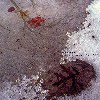 Empress has always been fond of devilishly deliberate songs, The Sounds They Madeis no different. Each tune is plucked and sung and crafted with utterconcentration, though without anything so technical which might requiresuch concentration. The obvious question is, "Why work with suchslowness?", or, "Why plod through songs through which even the mostrudimentary musician should be able to sprint?" The most convincinganswer I came up with was that the deliberateness prolongs thesensation and experience of the soft-spoken beauty of these songs. In"The Worry and the Wine," the initial melody sounds like the second daysessions of a self-taught guitarist just learning how to piece togethermusical sentences (such a guitar-wielding autodidact will stutter andstop and start again on some newfound melody, all the while clinging tothe elegance found within this newly discovered progression of sounds).The space between the notes becomes just as long (and as musical) asthe notes themselves. Each anticipatory moment between the notes hasthat air of potential mistake, where a sharp or flat tone could causethe song to fall apart or at least break down briefly. Yet the melodyhardly falters, and soon Nicola Hodgkinson's lovely vocals fade in andblanket the melody with a perfect complement. The effect is ratherstunning, like being witness to genesis of a modern indie lullaby. Theentire album is a collection of lullabies: hushed and soft-spokenvocals like windblown wisps of snow and guitars supplying notes onlywhere there is the barest of need. The novelty Empress adds to theirlullabies is a slight twist of electronics (echoey clicks and reverbswoop in between notes and swirl around playfully). "For Trains" has ajittery stop and start which sounds like the skipping of a CD (I wasquite convinced that my CD player's laser was doing quite a jig on thesurface of the CD) but then the crystalline and unwavering vocalsconfirm that it is pure artifice and not a surface scratch or faultydisc. The song itself (jittery music with smooth vocals) is an abrasivelisten and provides the hardest lullaby to listen to on the album. Itis not unpleasant exactly, but rather it is not the song to fall asleepto. Amidst the more fleshed-out numbers on the album are sometwo-minute spacers, songs in their barest form, skeletons almost. Theysubdivide the album with simple repeated themes, bringing the entiretimbre down to an even more narcotic level. Empress can sometimes beelusive with their quietude, so be careful that the few songs on thealbum which demand a more alert listen do not pass by too softly.
Empress has always been fond of devilishly deliberate songs, The Sounds They Madeis no different. Each tune is plucked and sung and crafted with utterconcentration, though without anything so technical which might requiresuch concentration. The obvious question is, "Why work with suchslowness?", or, "Why plod through songs through which even the mostrudimentary musician should be able to sprint?" The most convincinganswer I came up with was that the deliberateness prolongs thesensation and experience of the soft-spoken beauty of these songs. In"The Worry and the Wine," the initial melody sounds like the second daysessions of a self-taught guitarist just learning how to piece togethermusical sentences (such a guitar-wielding autodidact will stutter andstop and start again on some newfound melody, all the while clinging tothe elegance found within this newly discovered progression of sounds).The space between the notes becomes just as long (and as musical) asthe notes themselves. Each anticipatory moment between the notes hasthat air of potential mistake, where a sharp or flat tone could causethe song to fall apart or at least break down briefly. Yet the melodyhardly falters, and soon Nicola Hodgkinson's lovely vocals fade in andblanket the melody with a perfect complement. The effect is ratherstunning, like being witness to genesis of a modern indie lullaby. Theentire album is a collection of lullabies: hushed and soft-spokenvocals like windblown wisps of snow and guitars supplying notes onlywhere there is the barest of need. The novelty Empress adds to theirlullabies is a slight twist of electronics (echoey clicks and reverbswoop in between notes and swirl around playfully). "For Trains" has ajittery stop and start which sounds like the skipping of a CD (I wasquite convinced that my CD player's laser was doing quite a jig on thesurface of the CD) but then the crystalline and unwavering vocalsconfirm that it is pure artifice and not a surface scratch or faultydisc. The song itself (jittery music with smooth vocals) is an abrasivelisten and provides the hardest lullaby to listen to on the album. Itis not unpleasant exactly, but rather it is not the song to fall asleepto. Amidst the more fleshed-out numbers on the album are sometwo-minute spacers, songs in their barest form, skeletons almost. Theysubdivide the album with simple repeated themes, bringing the entiretimbre down to an even more narcotic level. Empress can sometimes beelusive with their quietude, so be careful that the few songs on thealbum which demand a more alert listen do not pass by too softly. With their tenth album, this Portland collective manages to release awildly organic mix of electronics and jazz that blends both avant-gardetendencies with more traditional song structures. Behind the Barberstartsoff with the introductory percussion rhythms and building electronic,string, and brass chaos of "Do The Slim Jim" before launching into thethe sprawling 16-minute "Slits Aranda." The track starts off with mutedbrass chords and shimmering cymbals that would not have been out ofplace on Miles Davis's Sketches of Spain before moving into apropulsive jazz sketch complete with female vocals and bellowingsaxophone courtesy of Jackie-O Motherfucker's Jeff Brown. The trackthen slides into a stew of horns and improvisational reeds beforepicking up again in the final three minutes with the original thumpingbass, percussion, and saxophone for a return to the track's main theme.While "Slits Aranda" shows Rollerball at their best, mixing traditionalstructure with avant-grade notions, other tracks highlight the band'sability to collaborate with guest artists. On "Burning Light," Portlandelectronic artist Nudge molds the band's sound in a way thatdeconstructs the various percussive and melodic elements, mixing eachinstrument (vocals included) to produce a cohesive blend that allowseach sound to retain its individual timbre. In the final three tracksof the album, Rollerball shifts into experimental mode, tinkering withgenres ranging from dub to free-form jazz. Behind the Barber'sfinal track, "Fake Tan," dissolves into a mix of a electronic chaos andmystical chants with a slow and chilling fade that ends the album on amore subtle note.
With their tenth album, this Portland collective manages to release awildly organic mix of electronics and jazz that blends both avant-gardetendencies with more traditional song structures. Behind the Barberstartsoff with the introductory percussion rhythms and building electronic,string, and brass chaos of "Do The Slim Jim" before launching into thethe sprawling 16-minute "Slits Aranda." The track starts off with mutedbrass chords and shimmering cymbals that would not have been out ofplace on Miles Davis's Sketches of Spain before moving into apropulsive jazz sketch complete with female vocals and bellowingsaxophone courtesy of Jackie-O Motherfucker's Jeff Brown. The trackthen slides into a stew of horns and improvisational reeds beforepicking up again in the final three minutes with the original thumpingbass, percussion, and saxophone for a return to the track's main theme.While "Slits Aranda" shows Rollerball at their best, mixing traditionalstructure with avant-grade notions, other tracks highlight the band'sability to collaborate with guest artists. On "Burning Light," Portlandelectronic artist Nudge molds the band's sound in a way thatdeconstructs the various percussive and melodic elements, mixing eachinstrument (vocals included) to produce a cohesive blend that allowseach sound to retain its individual timbre. In the final three tracksof the album, Rollerball shifts into experimental mode, tinkering withgenres ranging from dub to free-form jazz. Behind the Barber'sfinal track, "Fake Tan," dissolves into a mix of a electronic chaos andmystical chants with a slow and chilling fade that ends the album on amore subtle note. 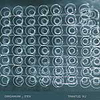 This four-track, 16-minute CD marks the first collaboration between twoof the prime movers of experimental sound. The brevity of the albummakes it somewhat difficult to get a handle on. Over the years, I'vecome to expect long-form, immersive soundscapes from both of theseartists - whether the long, shape-shifting textural drones of Organumor the multiple-part conceptual movements of Z'ev. At about fourminutes each, each of these tracks seem oddly truncated, resolvingthemselves just as they begin to become interesting. With artists asintelligent and purposeful as these, I'm not ready to assume that thiswas a miscalculation or just plain laziness. Rather, the brevity of Tinnitus Vumay be a reflection of its theme, which in this case appears to behearing loss. Tinnitus is an affliction of hearing in which thesufferer hears persistent buzzing, high-pitched ringing, televisionstatic or wind noise. David Jackman and Stefan Weisser both apparentlysuffer from intermittent tinnitus, and this work can be seen as anattempt to accurately reflect the experience of this hearing disorderto the unafflicted listener. Each piece begins and ends with a few barsof piano, but in between is an electronic storm of thought-cancelingwhite noise, curling metallic drones, and undifferentiated swarms ofwhat sound like tiny robotic gnats. The effect is quite brilliant atmoments, especially towards the end of the third track, when for amoment I thought that my hearing actually had dropped out for a moment,as sometimes happens the day after a particularly loud concert. Thiswas merely an auditory illusion borne of the cleverly renderedproduction of the track. There is none of Z'ev's trademark percussionin the mix, at least not in any recognizable form, so the album ends upcloser in sound to Organum's work, which is not a bad thing. In theend, I was left wanting more from this collaboration, and it looks likeI may get my wish soon, as a full-length collaboration is planned forrelease soon on Die Stadt.
This four-track, 16-minute CD marks the first collaboration between twoof the prime movers of experimental sound. The brevity of the albummakes it somewhat difficult to get a handle on. Over the years, I'vecome to expect long-form, immersive soundscapes from both of theseartists - whether the long, shape-shifting textural drones of Organumor the multiple-part conceptual movements of Z'ev. At about fourminutes each, each of these tracks seem oddly truncated, resolvingthemselves just as they begin to become interesting. With artists asintelligent and purposeful as these, I'm not ready to assume that thiswas a miscalculation or just plain laziness. Rather, the brevity of Tinnitus Vumay be a reflection of its theme, which in this case appears to behearing loss. Tinnitus is an affliction of hearing in which thesufferer hears persistent buzzing, high-pitched ringing, televisionstatic or wind noise. David Jackman and Stefan Weisser both apparentlysuffer from intermittent tinnitus, and this work can be seen as anattempt to accurately reflect the experience of this hearing disorderto the unafflicted listener. Each piece begins and ends with a few barsof piano, but in between is an electronic storm of thought-cancelingwhite noise, curling metallic drones, and undifferentiated swarms ofwhat sound like tiny robotic gnats. The effect is quite brilliant atmoments, especially towards the end of the third track, when for amoment I thought that my hearing actually had dropped out for a moment,as sometimes happens the day after a particularly loud concert. Thiswas merely an auditory illusion borne of the cleverly renderedproduction of the track. There is none of Z'ev's trademark percussionin the mix, at least not in any recognizable form, so the album ends upcloser in sound to Organum's work, which is not a bad thing. In theend, I was left wanting more from this collaboration, and it looks likeI may get my wish soon, as a full-length collaboration is planned forrelease soon on Die Stadt. 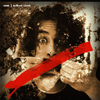 I'm getting quite sick of hearing this familiar thread in music: somonedecides to write a melody, throw some neat effects over it, add asplattering of acoustic instrumentation in and call it a great songthat borders on the experimental. The truth is, music like Enik's isbecoming more and more predictable all of the time. There's nothingcourageous or creative about changing the sonic template of rock musicby adding cabaret elements and electronic palettes of noise. When theshit hits the fan, the only thing that can save a record like this oneis good song-writing. Enik has an obviously enormous range ofinfluences that cover a spectrum from classical and jazz music to thestuttering and sick beat-heavy compositions of electronic music. Theproblem with this six-song EP is that it never leaves its influencesbehind and strikes new ground; it never does anything but try toemulate something far too familiar. This fact leaves Without a Barkfeeling flashy and without substance. "Chaos the Drug" is a goodexample of how bad metaphor, melodrama, and overproduction can kill asong. Forget that Enik is actively trying to combine a near-metal vocaltendency with dramatic washes of erratic percussion, typically brokenkeyboards, and something like a bass guitar stuck on two or three notesand way overplayed; the whole of this song sounds half-assed. It's asthough the vocals were meant to be deep and meaningful, but they comeaway feeling as badly performed as some of Alec Baldwin's earlyattempts at being an actor. There's passion in Enik's voice, but hisdelivery doesn't exactly match up with the music. "Tired Heads" suffersfrom a similar problem. There's a bare piano part being rolled alongeasily undernearth a toy drum machine sound while Enik croons away likehe's talking to a child that's asleep in its baby carriage anyways. Ifeel like I'm being lied to when I listen to this. Quite frankly Idon't believe in whatever whimsical notions Enik might have and that'senough to spoil these 24 minutes of music for me. Without a Barkis most predictable in its attitude and arrangement: Enik wants to bedifferent, so he employs a wide array of musical styles to hide thefact that he doesn't really have any ideas that haven't been used upbefore. Predictable in its diversity, painfully derivative, and lackingaltogether in some appeal that exists beyond its influences, Enik haswritten an album that will appeal to a lot of people stuck on badradio, bad television, and bad soundtracks, but there's nothing aboutit that makes it stand out from the sea of releases already doing thesame damn thing.
I'm getting quite sick of hearing this familiar thread in music: somonedecides to write a melody, throw some neat effects over it, add asplattering of acoustic instrumentation in and call it a great songthat borders on the experimental. The truth is, music like Enik's isbecoming more and more predictable all of the time. There's nothingcourageous or creative about changing the sonic template of rock musicby adding cabaret elements and electronic palettes of noise. When theshit hits the fan, the only thing that can save a record like this oneis good song-writing. Enik has an obviously enormous range ofinfluences that cover a spectrum from classical and jazz music to thestuttering and sick beat-heavy compositions of electronic music. Theproblem with this six-song EP is that it never leaves its influencesbehind and strikes new ground; it never does anything but try toemulate something far too familiar. This fact leaves Without a Barkfeeling flashy and without substance. "Chaos the Drug" is a goodexample of how bad metaphor, melodrama, and overproduction can kill asong. Forget that Enik is actively trying to combine a near-metal vocaltendency with dramatic washes of erratic percussion, typically brokenkeyboards, and something like a bass guitar stuck on two or three notesand way overplayed; the whole of this song sounds half-assed. It's asthough the vocals were meant to be deep and meaningful, but they comeaway feeling as badly performed as some of Alec Baldwin's earlyattempts at being an actor. There's passion in Enik's voice, but hisdelivery doesn't exactly match up with the music. "Tired Heads" suffersfrom a similar problem. There's a bare piano part being rolled alongeasily undernearth a toy drum machine sound while Enik croons away likehe's talking to a child that's asleep in its baby carriage anyways. Ifeel like I'm being lied to when I listen to this. Quite frankly Idon't believe in whatever whimsical notions Enik might have and that'senough to spoil these 24 minutes of music for me. Without a Barkis most predictable in its attitude and arrangement: Enik wants to bedifferent, so he employs a wide array of musical styles to hide thefact that he doesn't really have any ideas that haven't been used upbefore. Predictable in its diversity, painfully derivative, and lackingaltogether in some appeal that exists beyond its influences, Enik haswritten an album that will appeal to a lot of people stuck on badradio, bad television, and bad soundtracks, but there's nothing aboutit that makes it stand out from the sea of releases already doing thesame damn thing.